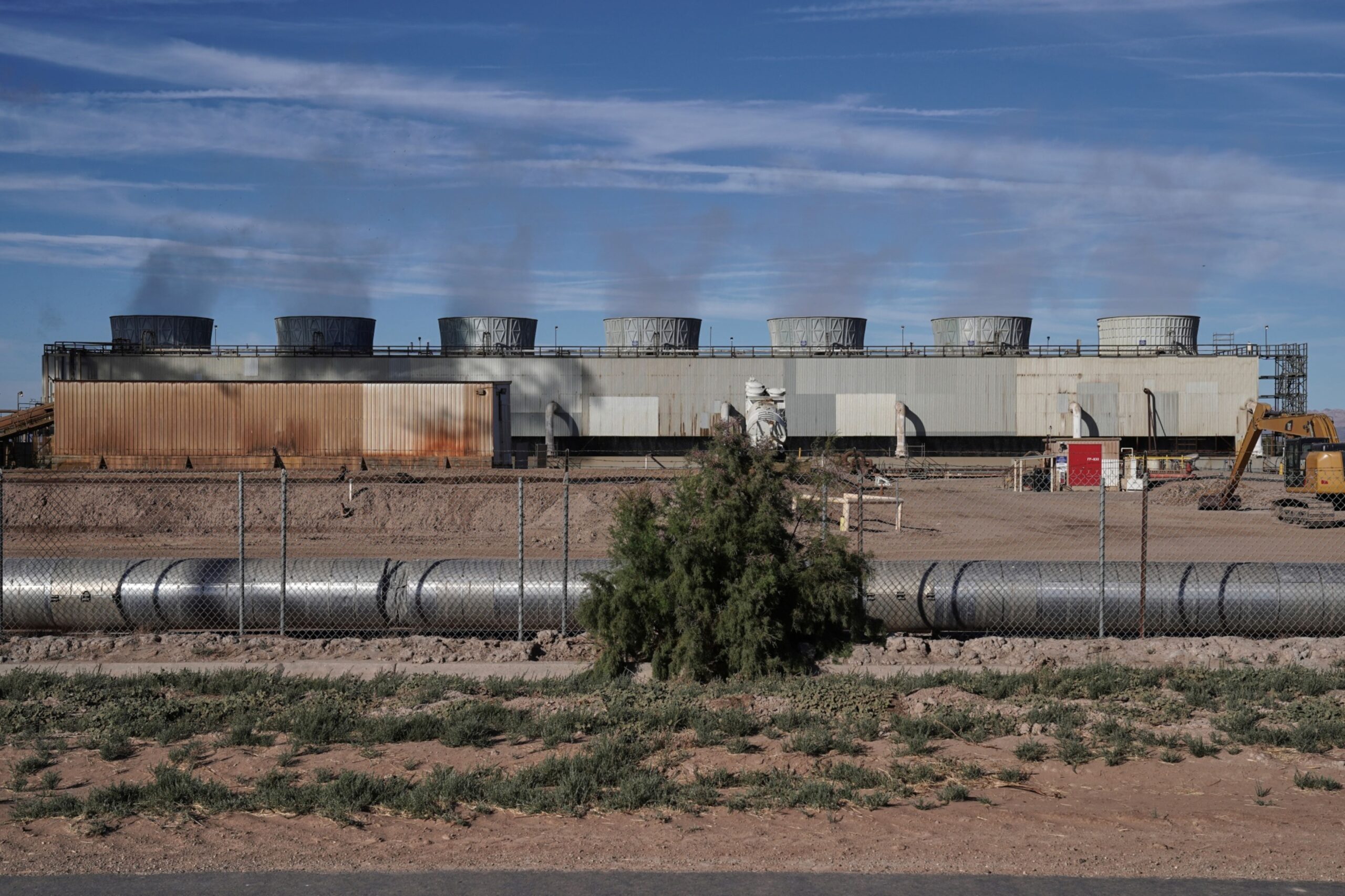(Bloomberg) —
Carl Hoiland grew up in a rural Oregon, taking trips into the Sierra Mountains with his grandfather to prospect gold and uranium. In grad school, Hoiland studied geothermal energy, the complex science of converting heat sources buried within the earth into electricity.
He quickly learned how little the field had advanced. Geothermal developers sometimes gets lucky with a geyser or natural hot spring, but otherwise the operations know as much about the risks and rewards of terrain as gold prospectors or oil explorers did decades ago. “You just have to go by instincts,” Hoiland says. “That’s how my grandfather worked.”
In 2019, Hoiland co-founded Zanskar, a data-analysis company intent on solving that problem. Technical progress has renewed interest in geothermal as a clean method for heating homes and providing utility-grade power. Hoiland’s startup, based in Utah, constructs a software model of wells—with insight on reservoir volume, rock density and magnetic fields—to give a snapshot of potential energy output. It then sells this data to developers, giving them a clearer sense of where to dig and the risks for certain locations. Hoiland calls it “a treasure map” for a renewable sector getting a sudden resurgence of attention.
“There’s enough energy in the Earth’s crust to power billions of electric vehicles, heat pumps, and data centers, if only we could locate it,” says Chris Sacca, managing partner for Lowercarbon Capital, an investor. “Enter Zanskar.”
Geothermal power was fashionable a few decades ago but investment dried up since solar and wind energy required far less upfront capital. The method, as a one energy analyst put it last year, has “oil and gas risk but with utility returns.”
New methods for drilling into deeper, hotter resources has made investors more optimistic about returns. Fervo, a geothermal startup that’s working with Google, announced a $138 million funding round earlier this week. Oil majors have invested in the field.
The US Department of Energy has unleashed funds for geothermal. And the new Inflation Reduction Act puts geothermal on an equal footing with wind and solar for tax credits on projects that commence construction through 2024, according to BloombergNEF.
“The potential win looks so much larger,” says Michael Sachse, chief executive officer of Dandelion Energy, a company working on geothermal for residential heating. “Now there are just many more dollars available.”
Zanskar is targeting grid-scale developers, not startups or residential operations, although Hoiland declined to share customers. His startup recently wrapped a $12 million investment from Lowercarbon, Union Square Ventures and the venture arm of Munich Re, the German insurer. Albert Wenger, a managing partner with Union Square Ventures, says Zanskar is “far ahead of anybody else” with its offering.
A 2019 report from the Energy Department calculated the success rate of geothermal wells during exploration at around 50 percent. Some estimates put the rate of productive wells even lower.
Hoiland sees his edge from data. During a videoconference call, he flips his camera around to show piles of boxes sitting across from his desk. They are filled with surveying material Zanskar purchased from a geologist who once worked for a geothermal company that went bankrupt decades ago. (Hoiland declines to name the company.) The files, gathering dust in an attic, are now being uploaded digitally and plotted onto Zanskar’s treasure map. By crunching this historical data with machine learning software, the startup promises a stronger forecast of the energy available in geothermal sites.
Hoiland says his company has mapped hundreds of geothermal sites and can measure seismic signals that conventional modeling from the oil and gas sector typically ignores. “We’ve been able to find anomalies that no one else has,” he says.
Today, geothermal accounts for a meager 0.2% of the world’s power generation capacity, around 16 gigawatts, according to BNEF. As costs drop and investment grows, however, the research firm expects that output to reach 27 gigawatts by 2030.
“It’s a totally under-leveraged resource,” says Wenger, the investor. “It’s right under our feet.”
To contact the author of this story:
Mark Bergen in Los Angeles at mbergen10@bloomberg.net
© 2022 Bloomberg L.P.





